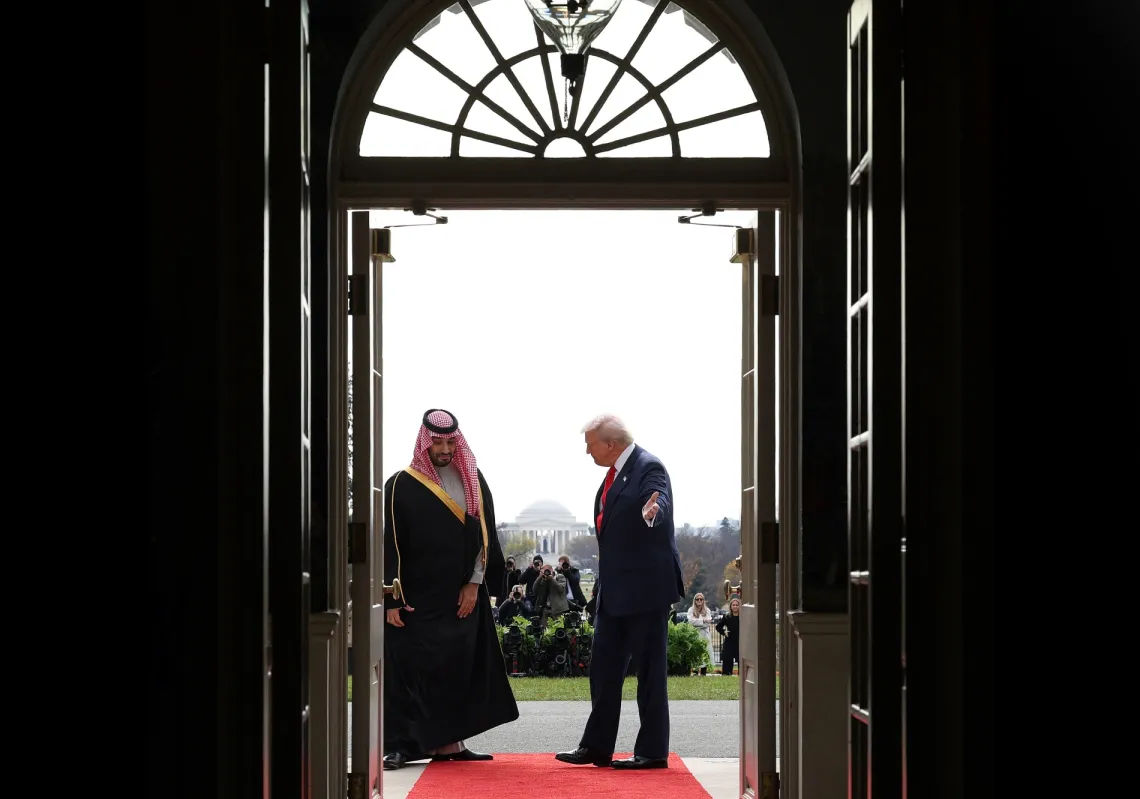 KAMPALA, UGANDA: President of Uganda Idi Amin Dada (2nd-L) poses with some of the Organization of African Unity (OUA, from left) Syrian President Hafez al-Assad, Egyptian President Anwar El Sadat and Libyan leader Muammar Kadhafi in juin 1972 in Kampala during an OUA summit. Source: AFP/Getty Images.[/caption]
KAMPALA, UGANDA: President of Uganda Idi Amin Dada (2nd-L) poses with some of the Organization of African Unity (OUA, from left) Syrian President Hafez al-Assad, Egyptian President Anwar El Sadat and Libyan leader Muammar Kadhafi in juin 1972 in Kampala during an OUA summit. Source: AFP/Getty Images.[/caption]
If there is one thing that can be said for certain about the Arab Spring, it is that monarchies have fared a lot better than republics. Opinions differ over why that is. Cultural legitimacy and institutional statecraft do make monarchies more stable than republican dictatorships. More cynical observers have cited oil security and geopolitical stability as more tangible explanations for why uprisings have not erupted in Riyadh or Rabat.
Amid this debate, there is a less perceptible factor that has been largely overlooked, and it has much to do with the way states manage popular expectations. What regimes in Tunisia, Egypt, Yemen, Libya and Syria all had in common was that they emerged at a time of high optimism, when Arab nationalist republicanism was at the forefront of progressive politics.
At the time, Arabs believed that self-determination could only be realised by sweeping away regressive internal forces through top-down revolution and by keeping out malign foreign interference. Those were the heady days of Nasserism.
The Nasserite republic in Egypt offered countries in the region a model to be emulated. In return for surrendering certain freedoms, including the freedom to elect one’s government, a military elite guaranteed the people stability and security, as well as universal education and healthcare, cheap food and jobs for all. What was also promised was dignity. The Nasserite-type republic swore to restore Arab pride by nothing less than victory on the battlefield.
Stretching the laws of sociology and economics to breaking point, the Nasserite-type republics promised so much but delivered little. As decades dragged on, people became disillusioned with what they saw as a case of diminishing returns.
The death knell for the Nasserite-type republic came on 9th April 2003 when US forces invaded Iraq and, in swift and humiliating fashion, unseated Saddam Hussein, the ruler who more than any other took the Nasserite model to its most brutal and absurd conclusions.
But by then, similar regimes had already begun reverting to a system of government reminiscent of the ancien regimes that they had overthrown in the 1950s and 60s. Whether it be hereditary leadership or adoption of free-market capitalism, the republics began to take on the political and economic characteristics of Arab monarchies. In seeking to emulate the monarchies, however, the republics failed to adjust their people’s level of expectation.
The monarchies did not promise their people a welfare state nor to liberate Palestine nor to confront the West. The monarchies cultivated positive relations with the West, which secured foreign investment but also contributed to a partial settlement of the Palestine issue through negotiations. Even in those monarchies that didn’t have oil, standards of living were generally higher than republics with similar economies.
In many ways, the kings and emirs were more honest with their peoples inasmuch as they didn’t attempt to sell them a pipe-dream; their policies suited the social, economic and geo-political circumstances of the countries they ruled, and not much more. The cautious and conservative policies adopted by the monarchies, based on gradual and organic change, would appear to be better suited to the conditions of societies newly emergent into modernity.
The republics on the other hand maintained the rhetoric of the all-powerful, progressive state, and with it the apparatus of state repression, but they were neither able to deliver on the economic pledges that were part-and-parcel of the grand bargain, nor the military victories promised.
The republics became accustomed to raising people’s levels of expectation, and by way of their construction, could not afford to lower those expectations lest people demanded political rights. They were, in essence, trapped by a rigid and deceitful rhetoric that was wearing thin.
According to this interpretation, the monarchies did not really survive the Arab Spring since they were never in real danger of falling in the first place. Their peoples’ expectations were never that high to begin with, and so they were not judged according to a particularly harsh criterion.
When seeking to explain why republican regimes fell and monarchies didn’t, the notion that uprisings swept across the Arab World is unhelpful. The facts are that uprisings only swept across Nasserite-type republics, and it is in the failures of these types of regimes that the roots of the Arab Spring lie.









